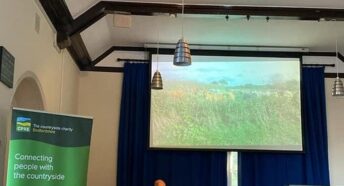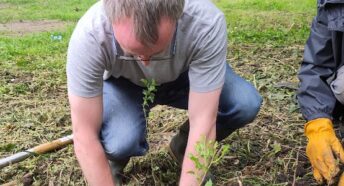Regeneration and the Forest of Marston Vale
Our guest blogger, Jo Roberts, Community Engagement Officer at the Forest of Marston Vale, tells us about a local success story.
The Forest of Marston Vale is a regeneration success story, and the idea of revitalising and restoring landscape continues to be a big part of the work we do.
Nearly 30 years ago, the government at the time established a pilot project to demonstrate the benefit of environmental improvement to economic and social regeneration, and deliver lasting change – ‘England’s Community Forests’ were born, and have been transforming the landscapes and communities in and around our towns and cities ever since.
The aim of the Community Forests was to regenerate areas that had been hit hard by heavy industry and landscape degradation. In Bedfordshire this meant first the brick making industry, and then the landfill sites (some of the largest in Europe) that followed. Since their creation, Community Forests have become a mainstay of environmentally-led regeneration and sustainability.
When the Forest of Marston Vale was designated, just under 5%, of the 61 square-mile Forest area had tree cover. Our work over the last 2 decades has seen this increase to over 15%, as we’ve created new woodlands throughout the Forest and planted over 2 million trees – our aim is to reach an impressive 30%!

Planting trees and creating woodlands continues to be recognised – by experts and the government alike – as the most effective way of regenerating landscapes, and for so many good reasons. Woodlands provide habitats for huge numbers of species: mammals to invertebrates; trees to fungi and everything in between. Hedgerows regenerate wildlife corridors, providing shelter for animals moving between habitats, and are an important landscape feature with a lot of wildlife value. And the value of woodlands to people is hard to overestimate – they give us cleaner air, places to get closer to nature, havens to escape to when we’re stressed, and places to improve our physical health and mental wellbeing.
Trees are able to provide so many more benefits too. Their regenerative effects on our air quality are incredible – not only do they remove particles of pollution from the air and store them in their tissues, but they also provide cooling shade. As our climate warms, this is something that we will come to appreciate more and more, especially in urban areas where the cooling qualities of trees can help to combat the ‘Urban Heat Island’ effect. Trees and hedgerows also have an important role to play in regenerating our watercourses, again removing pollution and preventing erosion of soils into streams and rivers by binding soils with their roots.

Some of the woodlands we create stand surrounded by arable fields, but where possible we look to regenerate and safeguard our local semi-natural ancient woodlands too. Our ancient woodlands are under threat from fragmentation, climate change, and pests and diseases – in a recent study by the Woodland Trust, only 7% of our native woodlands were found to be in a ‘good’ condition. Creating new woodlands adjacent to these ancient ones should make them more resilient to the challenges they face, increasing the area in which species can move. At the Forest of Marston Vale we plant a combination of native species including oak, hornbeam, wild cherry and alder – all grown and sourced within the UK, and chosen for their ability to tolerate and address climate change and increasing temperatures, safeguarding our Community Woodlands and this habitat for the future.

And finally trees and woodlands can have a regenerative effect on how we feel about where we live and work. Green and leafy areas are seen as places to be proud of. New jobs have been created in the woodland industry, managing woodlands and using the raw materials we get from them. In short, the power of trees and woodlands to give new life to damaged and scarred landscapes is second to none.








